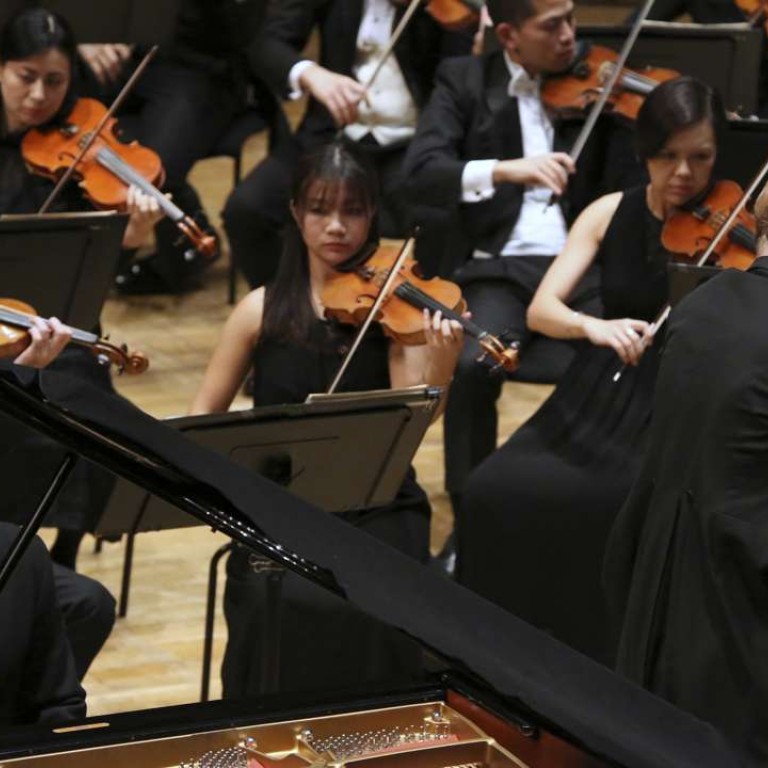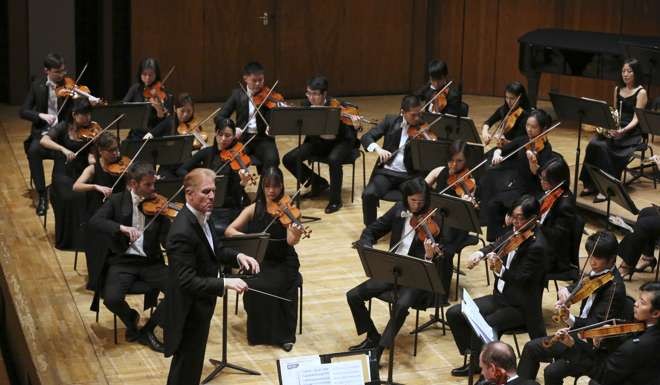
Review: Joseph Moog and Hong Kong Sinfonietta - musical chemistry
Novel concert programme matched youthful, lyrical Webern with masterful late Haydn, and influence of both could be heard in orchestra and soloist’s interpretation of Brahms’ Piano Concerto No. 2
Classical music programming has become so ossified that any deviation from the standard overture-concerto-symphony format is usually deemed radical or eyed with suspicion.
The Hong Kong Sinfonietta courted both on Saturday night at the Hong Kong City Hall Concert Hall simply by placing Haydn’s Symphony No. 104 before the intermission and Brahms’ Piano Concerto No. 2 afterwards.
To be fair, as the orchestra’s principal guest conductor, Christoph Poppen, explained from the stage, the Haydn symphony is on the short side while the Brahms concerto has both a four-movement structure and the integrated texture of a full symphony. Cynics, too, would note that delaying appearance of the evening’s soloist until the concert’s second half ensures most of the audience returns after the intermission.
The musical chemistry that this programming produced was surprising. Who knew that Anton Webern, usually considered the most austere of the early atonalists, could write a good tune?
Webern’s Langsamer Satz, his first writing assignment for Schoenberg and rediscovered only after Webern’s death, unfolds much in the manner of his teacher’s Verklaerte Nacht (Transfigured Night). Originally composed for string quartet (the title means simply, “slow movement”), the piece as arranged for string orchestra by the American conductor Gerard Schwarz places the young Webern fully in Mahler’s Viennese sonic milieu.

From those lush, youthful sounds of a composer first finding his powers of expression, the orchestra turned back the clock more than a century to an acknowledged master at the top of his form. Unlike the Vienna-born Webern, Haydn was a man of the Austrian provinces, uncomfortable in the big city until his successes in London late in life.
Under Poppen, the Sinfonietta gave Saturday’s audience a glimpse of what those Londoners heard: the composer’s majestic response to his cosmopolitan setting tempered by the playfulness of his provincial roots, in his 104th and final symphony.
Born in 1987, pianist Joseph Moog, Gramophone magazine’s 2015 Young Artist of the Year, has made a name for himself playing ego-driven repertoire such as Rachmaninoff and relatively obscure works such as those of Moszkowski, but the piece he played on his Hong Kong debut doesn’t fall into either of those categories.
The antagonism between soloist and orchestra that’s characteristic of the concerto form is wholly out of place in the Brahms Concerto No. 2, where the heart and the head are just as important as the fingers. Throughout the concerto’s 50 minutes, Moog maintained an appropriate balance between being the central figure and a team player. Under Poppen, the orchestra maintained an admirable balance, too, particularly in the winds.
Coming as it did after the Haydn symphony, Poppen and Moog approached the work with an emphasis on subtlety and classical attention to structure rather than romantic bombast. With echoes of Webern in the air, Brahms’ romantic side seemed to take care of itself.
Joseph Moog Plays Brahms, Hong Kong Sinfonietta. Hong Kong City Hall Concert Hall. Reviewed: October 15
